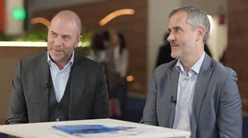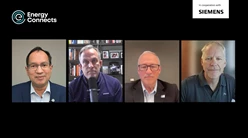AI, energy realism, and pragmatism should lead the energy industry
The energy industry is facing a triple whammy of rising demand from artificial intelligence, ageing grids, and geopolitical uncertainty, resulting in greater demand for oil, gas, and renewables.
This was the dominant message from this year’s ADIPEC panel, “Energy diversity and demand in a ‘Yes-and’ world”, where energy executives and policymakers traded idealism for realism. The consensus was the energy transition must be about addition, not substitution.
“Seven hundred million people still have no access to electricity, and two billion lack reliable supply,” said Her Excellency Mariam Almheiri, Group Chief Executive of 2.0 and the UAE’s former Minister for Climate Change.
“Add to that the power-hungry growth of AI and data centres, and you realise this is a new reality. We have to keep the lights on, power the AI economy, and make sure no one gets left behind.”
Pragmatism over purity
Pragmatism was the reigning theme of the discussion. Murray Auchincloss, CEO of bp, admitted that the company’s strategy had “shifted significantly” since 2020. “When we set out our transition strategy, the world changed,” he said. “War, hyperscalers, and national energy security concerns have all pushed governments to say, we need as much affordable, local energy as we can get. So we’ve adapted.”
“We have to keep the lights on, power the AI economy, and make sure no one gets left behind.”
That adaptation means bp has scaled back its renewable power ambitions and doubled down on profitable transition areas such as biogas, EV charging, and carbon sequestration. “We’re still committed to decarbonising,” Auchincloss added, “but we have to operate where we can make money and where it competes with our broader portfolio.”
Patrick Pouyanné, Chairman and CEO of TotalEnergies, echoed the sentiment but with a twist. “The world needs more energy and fewer emissions,” he said. “Electricity will be the fastest-growing energy form, and AI is only accelerating that, but we must recognise that molecules and electrons are not in opposition. We need both.”
Pouyanné defended continued investment in hydrocarbons, arguing that the “wrong narrative” of halting oil investment had created unrealistic expectations. “We have a natural decline of five to six per cent in oil fields each year. To maintain supply, we must keep investing,” he said. “It’s not about money; it’s about finding the right opportunities and maintaining resilience.”
Renewables are growing, but not fast enough
Sumant Sinha, Founder and CEO of ReNew, offered a clear-eyed view of renewable energy’s limitations and promise. “Renewables make up just 15% of electricity today, and electricity itself is only a quarter of total energy use,” he noted. “So we’re talking about just 4% to 5% of the overall energy mix. The journey has barely begun.”
In the next 20 years, renewables could rise to 50–60 per cent of electricity generation, said Sinha, adding, “Solar is now the cheapest new source of power globally. The bottleneck isn’t technology; it’s infrastructure. We need grids that can cope.”
He also warned against over-reliance on China’s manufacturing dominance. “Virtually every clean-tech product — solar panels, batteries, turbines, for instance — is 70% to 90% controlled by one country,” he said. “That’s not sustainable. The world must diversify its energy supply chains.”
The AI multiplier
If one force is upending all forecasts, it is artificial intelligence. “We see energy demand from power rising from 1% to 10% of the global economy within a decade — driven by AI,” said bp’s Auchincloss.
Both he and Pouyanné described AI as a “game changer” for operational efficiency. bp’s partnership with Palantir, for example, has lifted uptime in its plants to 97%, while AI-driven analytics in service stations have cut waste by nearly half.
At TotalEnergies, AI is central to optimising refineries and forecasting renewable output. “A 1% increase in production from better data is enormous,” said Pouyanné. “It means more energy with fewer emissions. AI won’t replace humans; it will multiply our capacity to act.”
Integration, not ideology
For H.E. Almheiri, the bridge between her policymaker past and corporate present is integration. “The future of energy won’t be shaped by one ideology,” she said. “It will be shaped by integration — by aligning economic growth, energy security, and decarbonisation.”
Auchincloss agreed, pointing to the importance of “stability and pragmatism” in regulation. “Investment flows to where policy is stable and returns are predictable,” he said. “That’s why places like Abu Dhabi continue to attract global capital.”





